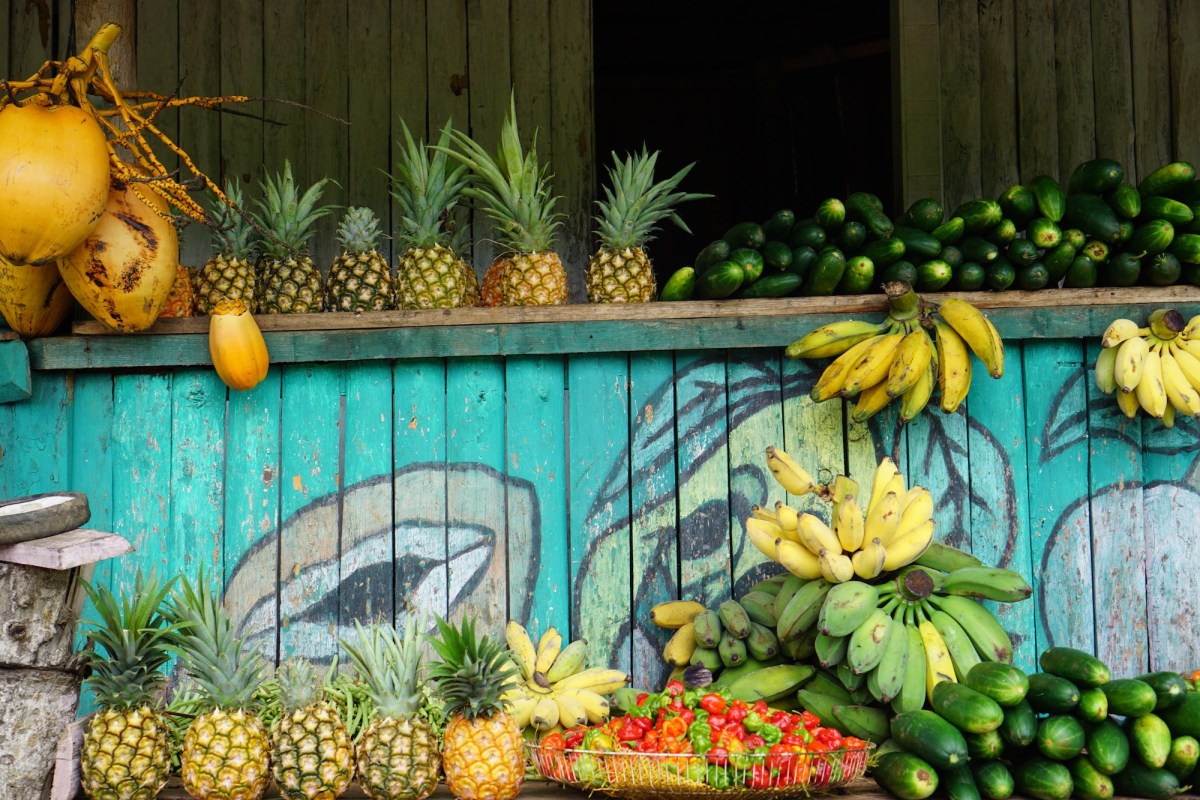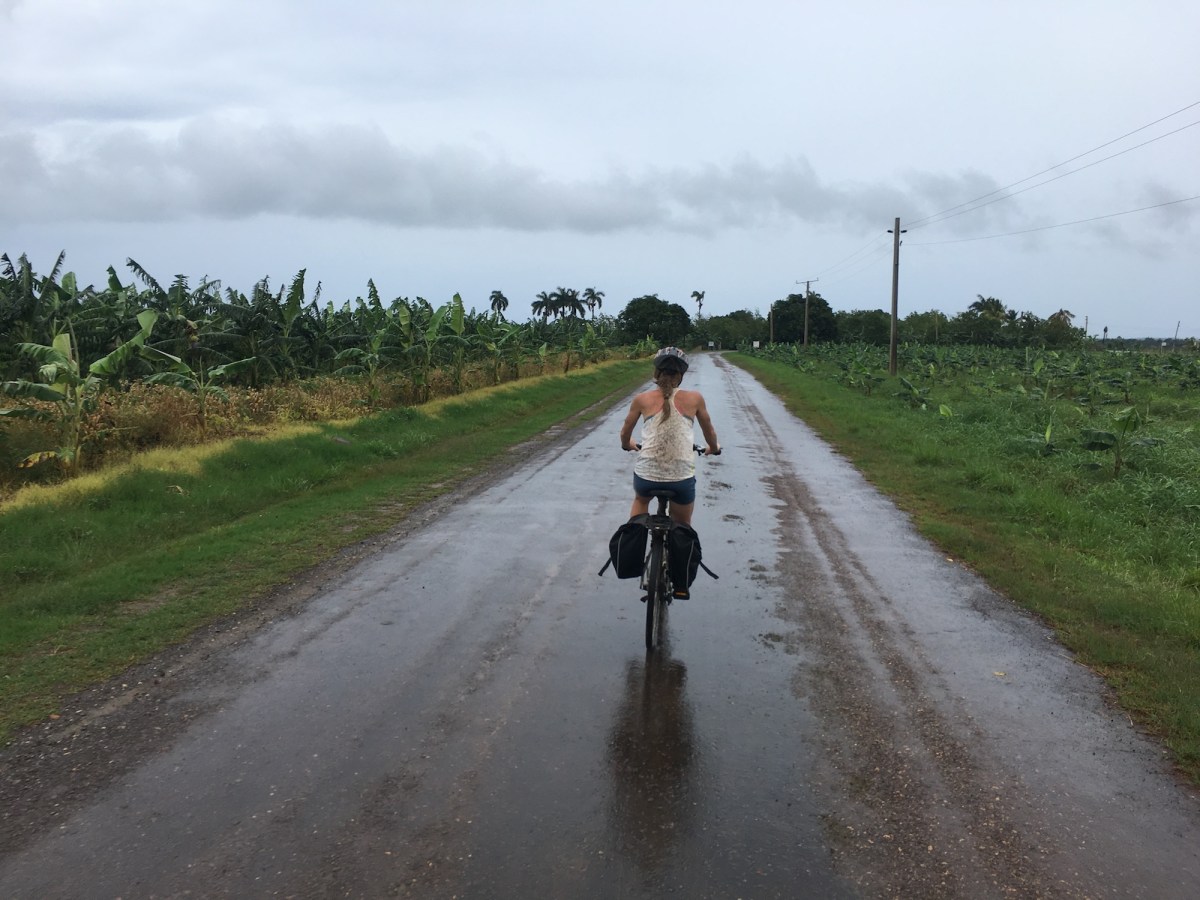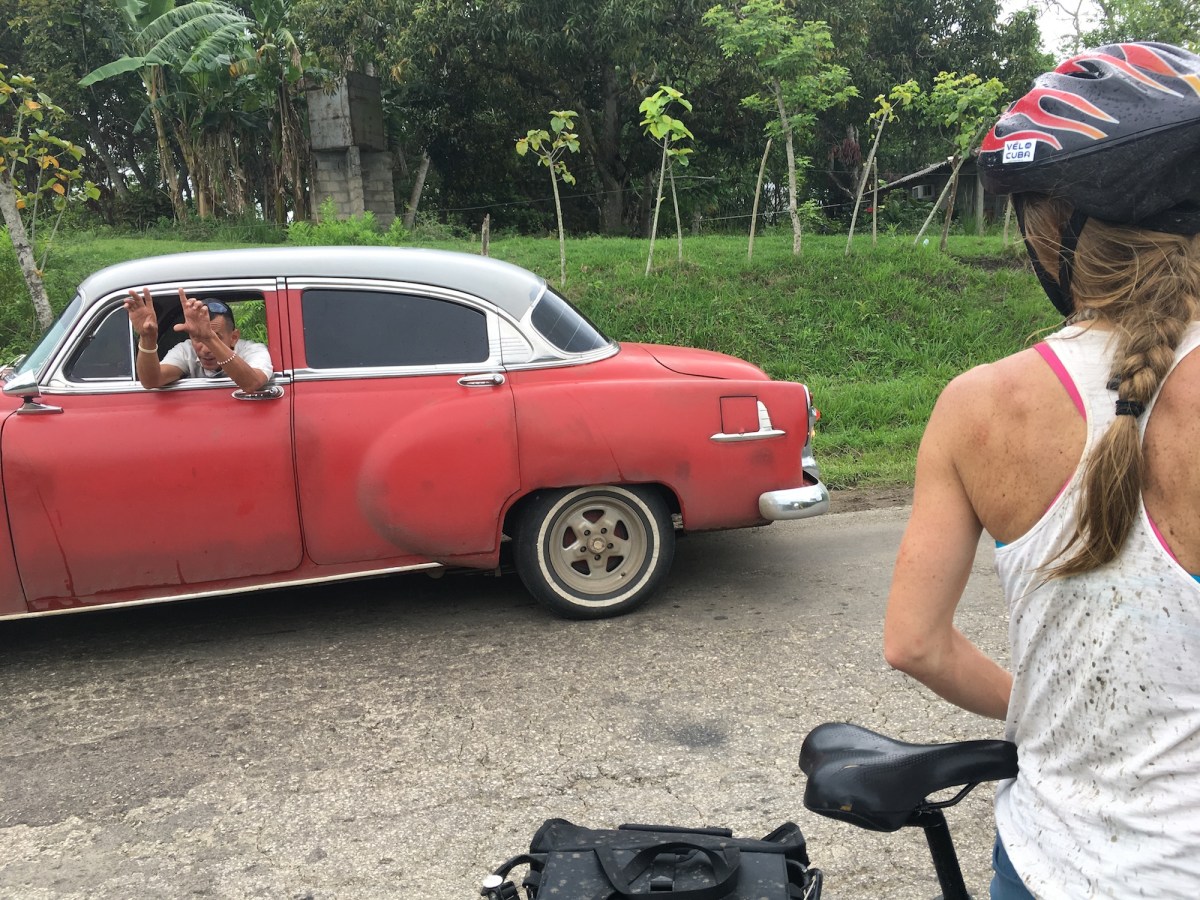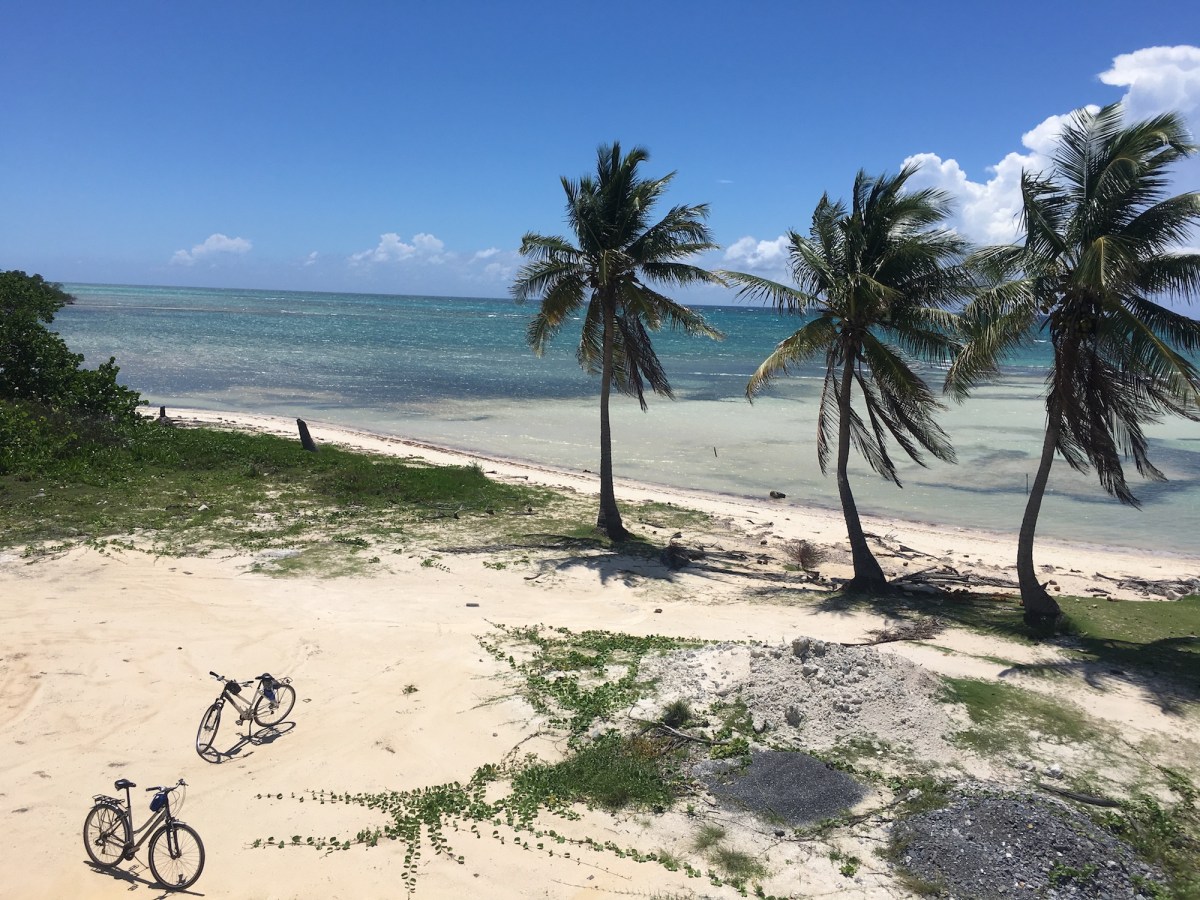We were halfway through our weeklong bike tour of western Cuba’s tobacco country when we stopped at Julio’s fruit stand on our way to the town of Viñales, lured by the prospect of fresh coconut water. We parked our bikes on the side of the road, and Julio led us to a splintered bench and motioned for us to sit. Silently, we savored the juice as our heart rates subsided and sweat dried. When we finished, Julio took the coconuts, hacked them apart and handed them back with a cutout bit of husk to use as a spoon for scooping out the flesh. Then, he brought pineapple slices, followed by stringy and sweet mangoes and a clutch of bananas—we were getting full, but couldn’t say no. We sat for at least an hour, gorging ourselves on tropical fruit and watching people pass by. Two men in a ’48 Plymouth pulled up and loaded the backseat with bananas. A tanned man in a cowboy hat trotted up with a cart full of pineapples, and Julio carefully chose a dozen to put on display. We fed his horse, named Cuco, spoiled mangoes. Julio warned me: “No le gusta la piña!” (Cuco doesn’t really like pineapple).
Traveling by bike affords a perspective of a place that other modes of transportation don’t. In Cuba, the infrastructure and culture of the country lend themselves perfectly to the bike tourist: Most of the roads are quiet, and drivers move slowly and pass with care. It’s easy to carry a minimal amount of warm-weather clothing and a raincoat. Clean and accommodating homestays abound. And the fruit is amazing. Most importantly, though, traveling by bike facilitates unique interactions with local people. In Cuba, our bikes functioned as de facto conversation starters everywhere we went.
After a few days in Viñales, we prepared to pedal back toward Havana. It was lunchtime, and schoolkids in khaki uniforms with blue kerchiefs walked along the road in groups of two or three. We had just passed a group of girls in tall knee-high socks when Julio came running up behind us.
“It’s me!” he cried. “With the fruit!”
We hadn’t planned on stopping at Julio’s on our way out, but we hadn’t not planned to, either. The bikes are what made our reunion possible.

Photo Credit: Betsy Welch
Getting there
The first order of business for bike touring in Cuba is getting there. Americans can travel legally to Cuba if they adhere to new regulations enacted in November 2017. (There is currently a Level 3 Travel Advisory for Cuba.) According to new regulations from the U.S. State Department, Americans cannot stay at certain state-owned hotels and restaurants or frequent other businesses associated with Cuba’s military. They are, however, encouraged to support the burgeoning private sector, which includes restaurants, homestays and other tourist-focused businesses. On bikes, this was easy to do.
Supporting the private sector
One way to support the private, small-business sector in Cuba is to rent a bike rather than bringing one from home. A renewed interest in cycling—both among Cubans and visitors—means that it’s not hard to find two-wheeled transportation for hire. A friend recommended Havana’s Vélo Cuba, and for a week or so prior to our trip, I communicated via email with its founder and owner, Nayvis. Vélo Cuba is a bike shop unlike any I’ve ever visited—and I’ve rented a fair number of bicycles abroad. On the surface, it looked like a typical bike shop—tools hanging on a pegboard on the wall, and tubes of grease and bottles of chain lube on the workbench. About 10 bikes hung from a rack inside the shop, and another 10 stood in racks out front. But every single one was a different make, model, size and style. There were brands I recognized and some I didn’t. The bikes we were going to take, Nayvis told us, were German, left in Cuba by German tourists. It’s really the same with the others, she explained. The bikes had all been donated or sold to her by foreign visitors. Because the U.S. trade embargo makes importing new bikes cost-prohibitive, Nayvis says, Vélo Cuba’s fleet depends on this international goodwill. It’s not a perfect system—she still has to obtain parts and tools, some of which are also donated—but necessity is the mother of invention.

Photo Credit: Betsy Welch
“Support for the Cuban People”
Before we pulled away from Vélo Cuba, shorts and T-shirts stuffed into panniers, Nayvis asked if we needed a place to stay in Havana before our flight home. My mom rents out rooms in her home, she said, and I’d be happy to put you in touch if you need somewhere to stay.
The offer of rooms to rent echoed throughout the Cuban countryside. Casas particulares have become ubiquitous around the country, from blip-on-the-radar villages to large cities and tourist areas. When traveling by bike, finding a place to stay is often as simple as arriving somewhere and looking for the blue and white sign affixed to the front of licensed homes. Owners take payment in cash and offer breakfast and dinner for an additional cost. Most rooms cost between $15 and $30 and meals run from $5 to $12.
Unsure of what we’d find on the ground, I booked a few casas in advance, which in some cases can be done on travel websites like Airbnb or Homestay.com. Guidebooks like the Rough Guide and Lonely Planet usually feature a few casas, as well; one of these was Casa Mario y Antonia, a blue and white bungalow Palma Rubia at the end of the road near the ferry terminal to Cayo Levisa.
We showed up at Mario and Antonia’s house with water pooling off our helmets and splatters of red mud tattooing our backs and legs. “You’re on bikes!” Antonia exclaimed, shooing us into the covered patio from the wet weather. She and Mario promptly got to work making us feel comfortable; we removed the panniers from the bikes, and Mario took them back outside to hose them off. We were shown to our room, which was clean and basic, instructed to take warm showers, and told that dinner would be ready shortly (cigars and beer were also available). Due to an unseasonal tropical storm following us around the island, this scenario—our arriving sodden and apologetic and our hosts scurrying to make us comfortable—would play out almost every day we were in Cuba. We stayed with Miguel, a math teacher and permaculture farmer in Viñales; Yoslaidy, who shared my exact birthday, in Santa Lucia; and Mary, a veterinarian, in Havana. Each one of them became a portal into life in Cuba, and we left with promises to stay in touch and hopefully meet again.

Photo Credit: Betsy Welch
A full-time schedule of activities
The State Department requires that travelers select the category “Support for the Cuban People” when they book a ticket and list their official reason for traveling to Cuba. This means travelers must “engage in a full-time schedule of activities that result in meaningful interaction with individuals in Cuba.” For us, ‘meaningful interaction’ was a directive to spend time getting to know Cubans and how they lived. When you travel by bike, the basic requirements of day-to-day life—bikes, lodging, directions, the occasional tool for repair and food (lots of food)—foster such interaction. Asking questions is essential, and asking simple questions related to traveling by bike—Is there somewhere to buy ice cream? Can we fit the bikes in the taxi?—becomes a springboard for deeper conversation. The Cuban people, it seemed, not only had an answer but always offered something more.
As we were preparing to pedal away from Julio’s fruit stand the second time, he walked down to our bikes with a pineapple, two cucumbers and a bunch of bananas. Para energía—for energy—he said with a grin as he mimicked the motion of pedaling. He waved us off, refusing payment, and the energía fueled the rest of the ride.

Photo Credit: Betsy Welch
Interested in traveling by bike to a foreign country?
- Carrying all of your gear on your bike gives you a lot of freedom and can be a cheaper way to travel. But it also requires more physical effort and gear.
- There are several ways to travel in a foreign country by bicycle. From self-supported adventures to vehicle-supported touring, find the option that best fits your needs and budget.
- Like most travel, planning for small groups is easier than large groups.
- Plan your route in advance and keep in mind factors like mileage, traffic, road hazards and accommodations.
- For more, read our Bike Camping and Touring Trip Basics.
- For information on bike touring specific to a particular country, guidebooks like Lonely Planet and the Rough Guide list suggested tour operators, rental companies and itineraries.
- The most up-to-date information on privately run restaurants and accommodations and other tourist attractions can be found on websites with user-generated content like TripAdvisor or Google reviews.
